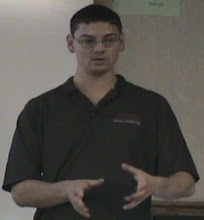I've only skimmed it so far, but it is good to see this sort of thing. I suppose by the nature of things, quantum computation is very math intensive and we lack good visual representations of things. The only real two exceptions to this are quantum circuit diagrams and the Bloch Sphere. The circuit diagrams represent the application of operations to quantum registers (collections of qubits). As an example, here is the circuit diagram to construct a Sum operation from elementary operations:

The other big graphical representation we have is the Bloch Sphere. Basically this is a way of viewing the state of a single qubit on a sphere. In this the poles (of the z axis) represent |0> and |1>, and a point on the surface represents the state of the qubit. This is great for visualizing a single qubit, but doesn't scale beyond that. I wouldn't cite in a paper, but this blog is a more informal forum, so here's the link to Bloch Sphere on Wikipedia. Here's what a Bloch Sphere looks like though:

As I said, it is good to see a paper like this. The abstract the authors put together for the paper sums it up better than I would, so here it is:
We explore the main processes involved in the evolution of general quantum systems by means of Diagrams of States, a novel method to graphically represent and analyze how quantum information is elaborated during computations performed by quantum circuits. We present quantum diagrams of states for representations of quantum states by density matrices, partial trace operations, density matrix purification and time-evolution by Kraus operators. Following these representations, we describe by diagrams of states themost general transformations related to single qubit decoherence and errors.
Diagrams of states prove to be a useful approach to analyze quantum computations, by offering an intuitive graphic representation of the processing of quantum information. They also help in conceiving novel quantum computations, from describing the desired information processing to deriving the final implementation by quantum gate arrays.

No comments:
Post a Comment